Well known in North America, the Great Pyrenees is a large breed guard dog. If asked to describe this dog in two words we would choose “Beautiful” and “self-contained”.
The Great Pyrenees is a mountain dog also known as the Pyrenean Mountain Dog. This dog is beautiful, it is. This dog is large, furry, and a beautiful sight for the eyes. Its appearance makes the human personal expression “Love at first sight” quite literal.
Well, the Great Pyrenees is not just all about the looks. Its appearance comes as a boon to it but this mountain dog is also very courageous and very good at its job. These dogs as livestock guarding dogs are great and know exactly what they are expected to do.
This dog might be the only breed that is large but not at all scary. This was just the outer base of knowing the Great Pyrenees keep scrolling to look beyond this dog’s looks.
Table of Contents
Great Pyrenees Pictures

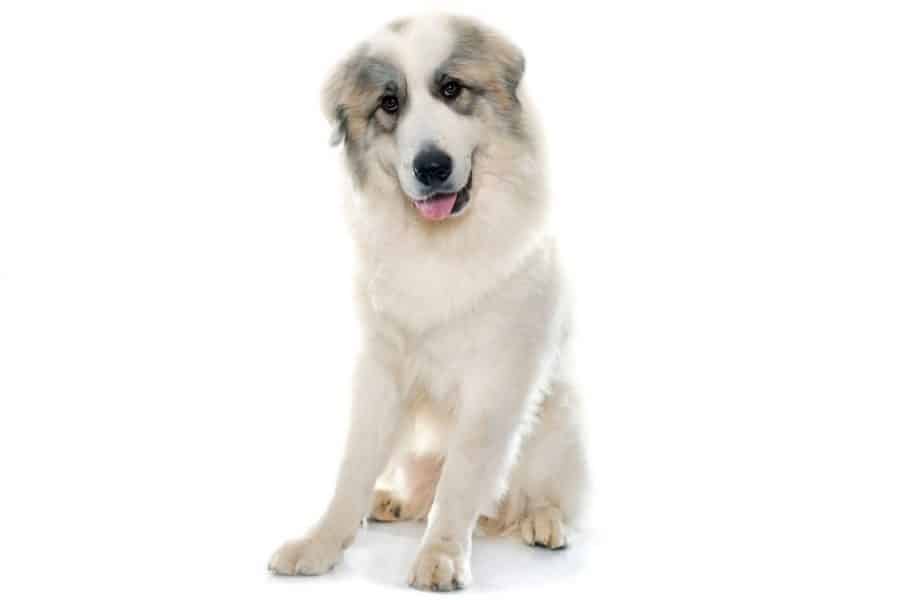
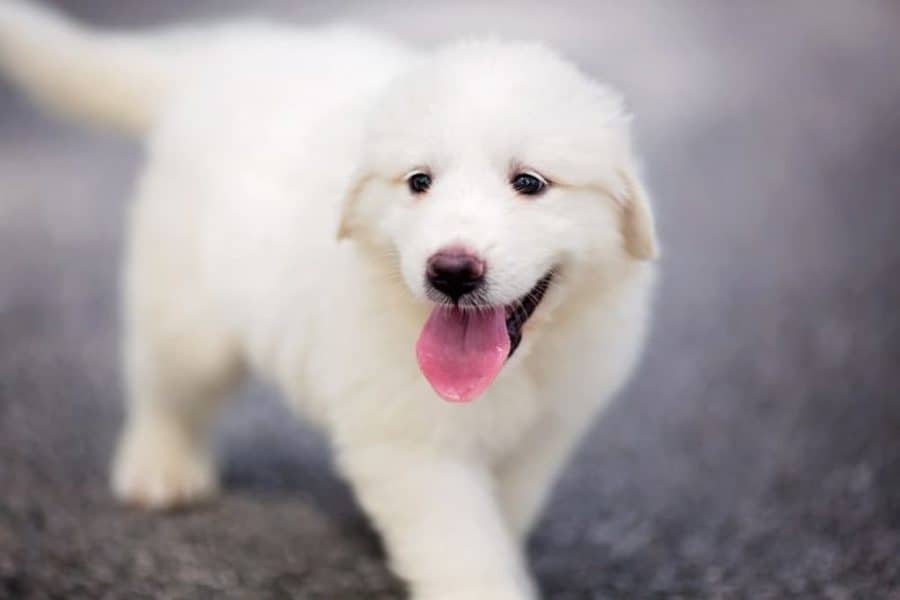
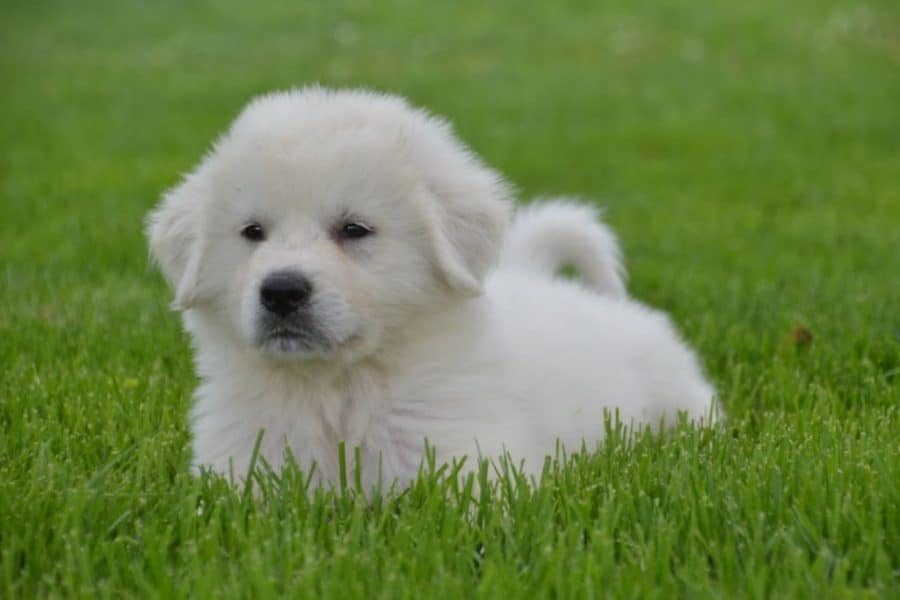


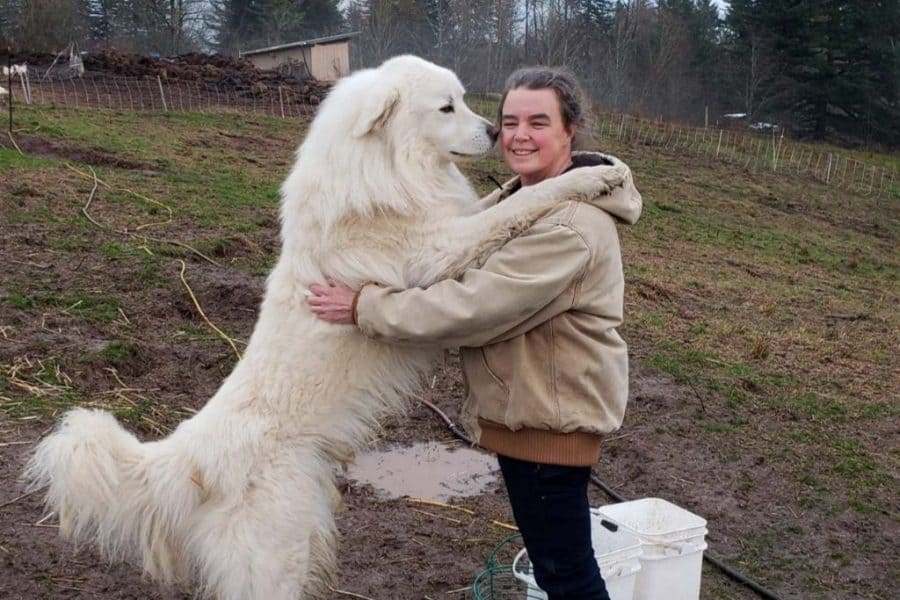



Great Pyrenees Dog Facts

Average Weight: Male – 100 to 160 pounds, Female – 85 to 115 pounds.
Average Height: Male – 2.3 feet to 2.5 feet, Female – 2.1 feet to 2.5 feet.
Dog Group: Working Group
AKC Rank: 66
At A Glance
This is a large breed dog and the size of Great Pyrenees in terms of weight and height is almost like a giant. Males and females vary in size.
Male – The male Great Pyrenees’ height is 27 to 32 inches and they weigh 100 to 160 pounds.
Female – The females have a height of 25 to 30 inches and the female Great Pyrenees' weight can be 85 to 115 pounds.
The lifespan or average life expectancy of the Great Pyrenees is 10 to 12 years.
In no way is this dog suitable for apartment life. All large breed dogs are not apartment-friendly and the pyre dog especially, is a mountain dog and the apartment life is just not right for them.
The Pyrenees dog is one very affectionate and mannered being. These dogs are trustworthy and loyal to their owner. They are great as pets and will look after the entire house with utmost dedication.
A Great Pyrenees dog should be introduced to other pets at an early age. If you own a cat and bring home a great Pyrenees puppy make sure you make the two meet and bond when the Pyrenees dog is just a puppy. They also get along well with other dogs.
The Great Pyrenees has very high barking tendencies. They are guard dogs by birth and they are prone to lean a little more on the guarding side of their personality. Their inner protective instinct and nature make them noisy quite a lot.
The Great Pyrenees has a coat that is made for only cold weather conditions and because of its coat type, it cannot tolerate hot weather.
Cold Weather – These dogs are made for the cold climate blessed with a long and thick outer coat that makes cold weather bearable for them.
Hot Weather – They already have a double coat which allows them to stay warm in a cold climate more heat can cause discomfort to the Pyrenees dog. Keeping them in hot weather regions should be avoided.
This breed ranks high for intelligence as they are used to guard livestock, they have quick-wit and leader-like qualities. On the other hand, they are not highly trainable. They are quite free-willed and for training them you will need to put in some extra efforts.
The Great Pyrenees dog will need a lot of exercises. They are working dogs and no working dog will ever do well without proper exercise.
Their grooming needs are also pretty high. These dogs shed a lot and they also have too much hair to get rid of. So, they can be called the high-maintenance dog.
Dogs that shed a lot are never hypoallergenic and so is the great Pyrenees. Even though the hair may not necessarily cause allergies but they are still not hypoallergenic dogs.
Bringing this mountain dog home can cost you $1400 to $5000 or more. The price of a great Pyrenees can also vary a lot from country to country.
About Great Pyrenees
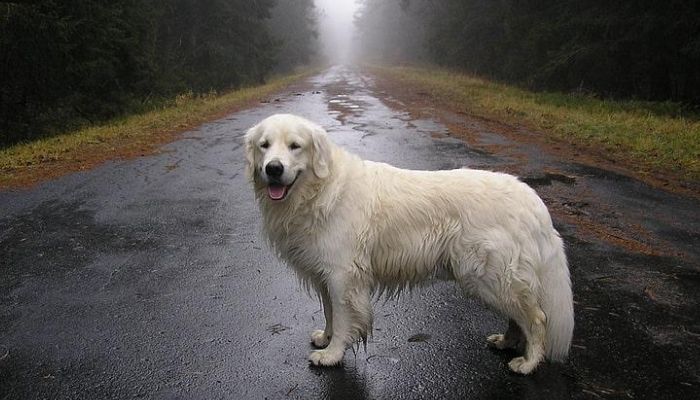
The Great Pyrenees is a large breed dog bred to melt hearts. This dog is like the most good-looking working dog that has it all. These dogs have a strong build, beautiful fur that is long and thick, and they are tall and large.
Bred with the sole purpose of guarding the livestock this breed is naturally caring and protective towards its family. The size of Great Pyrenees can be as tall as 2.5 feet or more. The Great Pyrenees’ weight can also be around 100 to 160 pounds.
The females have slightly varying body measurements. The Great Pyrenees dog is a mountain dog just like Saint Bernard. Both the dogs are giant breeds and still very adorable.
The Pyrenees dog is longer in length rather in height. They aren’t ideally tall but they are long. Their head is wedge-shaped but the head (crown) is slightly round in shape. These dogs have a black nose and dark brown eyes. Their ears are V-shaped but they have dropping ears.
The Great Pyrenees has a weather-resistant double coat, especially the cold weather-resistant. Their coat is long, thick, flat and they have coarse hair. All this thickness and coarse hair lie under a woolly and overflowing undercoat.
The male Pyrenees has a more fulsome coat around the neck and shoulders which forms a mane or ruff. This profuse mane helps them defend against wolf attacks. They have a tail that has a feather-like shape and is also very profuse. Their tail is also very long and can be carried very low almost reaching the hocks.
They don’t have many colors but there are few different colors available. These dogs are somewhat fox-like in appearance but in the head, they are of a very calm and well-mannered personality and temperament.
The Pyrenean mountain dog has a very calm and balanced temperament. They are very affectionate and love their families. They have been guarding flocks for years and so they exactly know how to guard their humans too.
The great Pyrenees is strong-willed, confident, and independent. They are perfect for families that live a calm balanced life. This dog suits well in environments where there are set routines for the day and plenty of space to move around.
History

The Great Pyrenees also popularly known as the Pyrenean Mountain Dog, was developed centuries ago. This breed was created with the sole purpose to work as herding dogs with shepherds.
They belong to the Southwestern and European mountains and were developed in the mountains that are between France and Spain. The first mention or description of the Pyrenees dog dates back to 1560 to 1630s.
Across Southwestern Europe, these dogs have been used for looking after the flocks. These dogs are known as Great Pyrenees dog only in the United States of America. In Europe and UK, they are still known as the Pyrenean Mountain Dog.
The breed is believed to have developed by a group of mountain flock guards, thousands of years ago. These dogs must have arrived with their shepherds and sheep in the Pyrenees Mountains around the 3000 BC.
In the Pyrenees Mountains, this breed was developed and evolved. Living in isolation and doing only selected work must have enhanced the skills of guarding in the Great Pyrenees.
In the developing and breeding over these years, of course, mix-breeding and cross-breeding got involved. But the Great Pyrenees dog’s breeding never involved the Mastiff dogs and they have no Mastiff ancestors.
Over the years the Great Pyrenees developed a very special bond with shepherds and was the favorite peasant’s dog. They not only guarded the sheep but they also became very attached to the shepherds and their families.
The Great Pyrenees was also a Royal favorite. In 1675, King Louis XIV adopted the Pyrenees as the Royal Dog of France. In 1850, Queen Victoria of Britain also owned a Pyrenean Mountain Dog.
The Pyrenees dogs were introduced in England in 1909 by Lady Sybil Grant, for breeding purposes. Then for 26 years, the dogs went almost extinct and after 26 years they were bred again in England in a kennel.
Even during World War I and World War II these dogs were nearing extinction but Monsieur Senac-Lagrange stopped the breed from being extinct. Then in 1931, this breed was brought to the United States by Mr. and Mrs. Francis V. Crane.
In 1933, the American Kennel Club recognized the Great Pyrenees officially. With such a huge history and surviving extinction, now these dogs are used as family dogs. They make as great and very well-mannered pets. The Pyrenees dogs are always a true friend and the guardian angel of its humans.
Facts Theatre
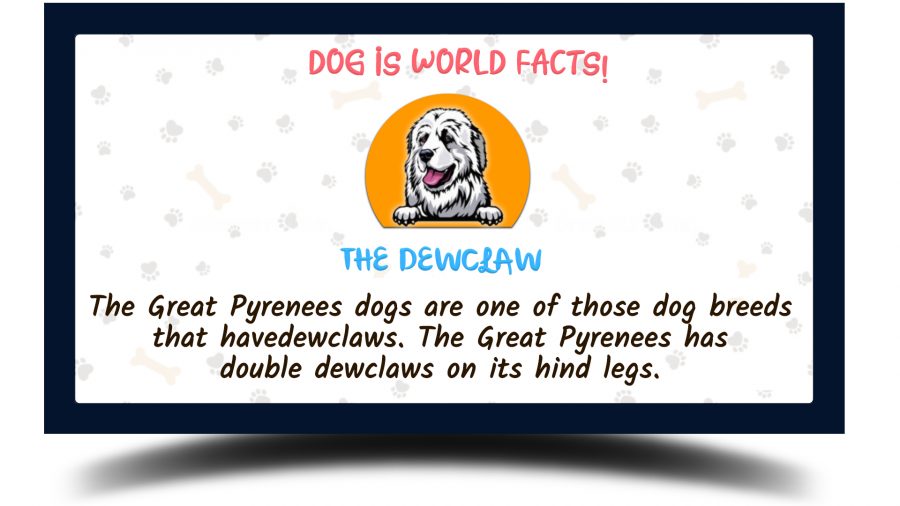
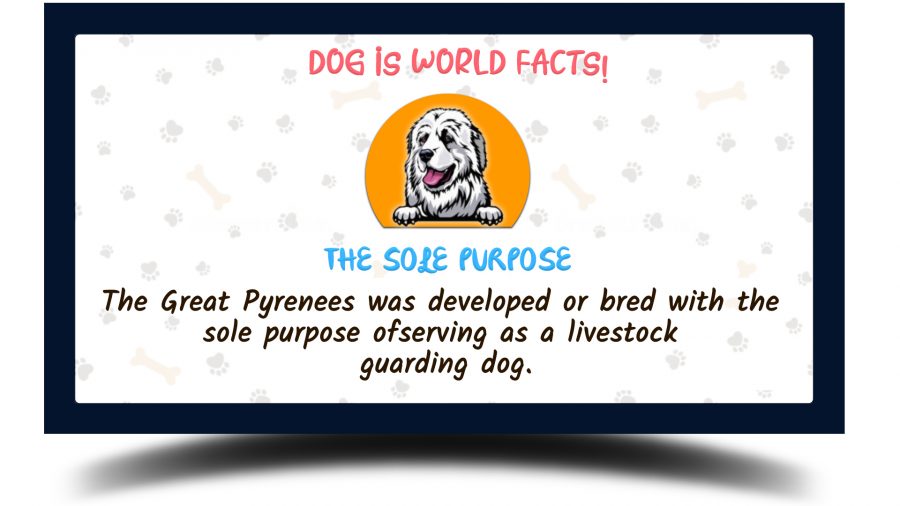

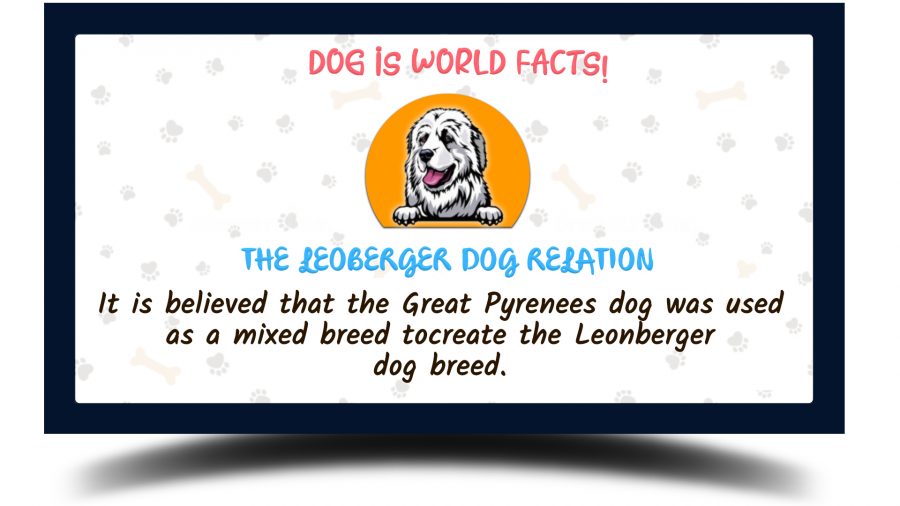
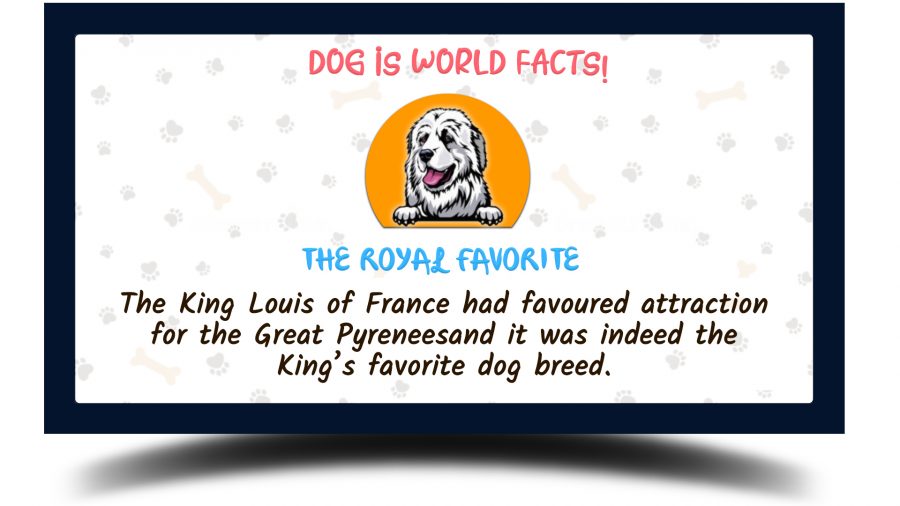

Parenting Guide and Care

The Great Pyrenees is a dog that not everyone owns or can handle. Pyrenees dogs are famous but they are not kept as domestic pets largely. If you are someone who’s fallen for the Pyrenees you should also consider the care they will need.
Pyrenees dogs are great with their humans. However, they need a little more attention and care than other breeds. Here are some parenting guide and care tips for your Pyrenees dog:
- The first thing to keep in mind before bringing a Pyr puppy home is that this dog requires appropriate exercise. Its exercise needs are very balanced neither too high nor too low. This is a large breed but they still need comparatively less exercise. Do not overdo the exercises for them.
- Once you learn how to make them exercise you will learn that these dogs are also not easily trainable. The pyr dog is well-mannered but they tend to do their own thing and in their way.
They are not the most obedient so you will require more effort to train them. You can also consider obedience training classes for your Pyrenees dog.
- With obedience training, start leash training your pyr pup because if they are not leash trained properly managing them when they are fully grown can be difficult. Start their leash training from day 1.
- Your Great Pyrenees should be socialized a lot. They should spend most of their young age in socializing with people other than the family. Not only should they be socialized with humans but other pets as well.
- Never keep the Pyrenees in an apartment. This is a large breed and above that a working dog who needs all the space to roam and grow large. Cramped or small apartments can be very unsuitable for this dog. Also, they bark a lot and in an apartment, the barking can trouble the neighbors.
- Taking care of the grooming for a pyr dog is also important as they shed a lot. Regular brushing can save you efforts and money for having a professional groom your dog. The grooming good news is that the Great Pyrenees need very few showers every year.
- Keep a check on their diet and feed the pyr only premium-quality dog food, mostly dry. Balance their nutritional intake and you can also feed them fresh homemade food occupying only 10% of their dog food diet.
- Make sure your Pyrenees has a good and peaceful spot in the house. You should provide them dog bed which keeps them off the ground. Wash their bed covers and blanket often.
Personality and Temperament
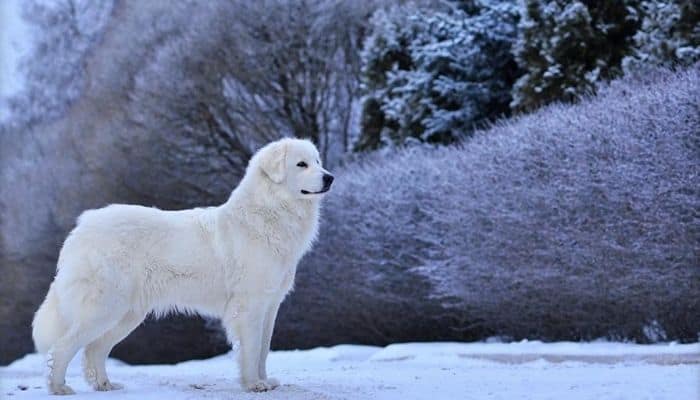
If you look at the Great Pyrenees you may feel like it is a huge Golden Retriever gone all white. The Pyrenees is a very beautifully built mountain dog. Their personality and temperament are exactly how they appear.
These are guarding dogs and have forever been guarding livestock. They are naturally very protective of anything their humans, other pets, objects, everything. This mountain dog is also very attentive and fearless.
The Pyre dogs are also a mix of territorial and protective personality added together with an even-tempered mind. They are very shy around other people and can get suspicious of even the clothes or things a stranger is wearing.
This is why early socialization for these dogs is a must to help them deal with their shyness and become accepting of strangers. You might want also need your pyr to accompany you to the local market, this will make it easier for him to be around strangers or in a crowd.
Their personality also has a chewy trait. These dogs are very chewy or mouthy. You should always keep them busy and they should have something to chew on. Being busy will also make a Great Pyrenees puppy stay in one spot and not become the chasing dog.
Pyr puppies stay true to their widely accepted personality of being extroverts. These dogs love being outdoors and they should spend more time outside the house in the front or backyard. If a Pyr is bored they can become super destructive.
These are all the personality traits but the temperament of the Pyrenees dog is very generous and loyal. The Great Pyrenees has a lot of love to give and he/she is always a huge giver in no expectation of anything more.
They are even-tempered and probably the most well-behaved and well-mannered dogs. They are devoted to their families and they will guard and protect their humans religiously.
Highly aggressive when provoked, is what you will never see coming. These dogs look like the most loving, obedient, and well-behaved which they are, but they can destruct anything in their way once provoked.
The Great Pyrenees dogs don’t care about the world and live in a world of their own. They love their humans but are likely to do as they please. A pyr dog can die for you but only if he wishes to do so.
An overall wonderfully beautiful dog the Pyrenees is a free-spirited yet the “homecoming” personality with the most mannered and calm temperament.
Colors and Grooming

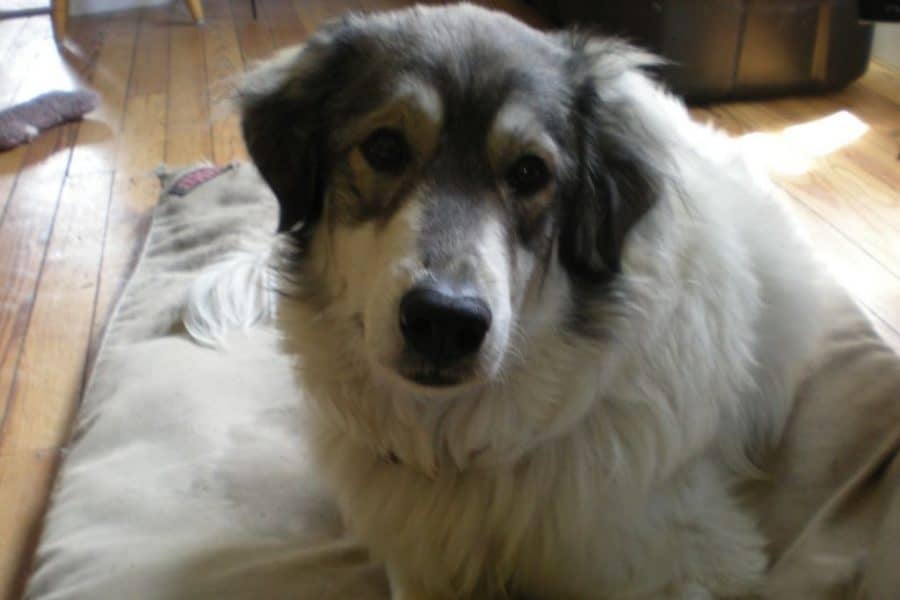
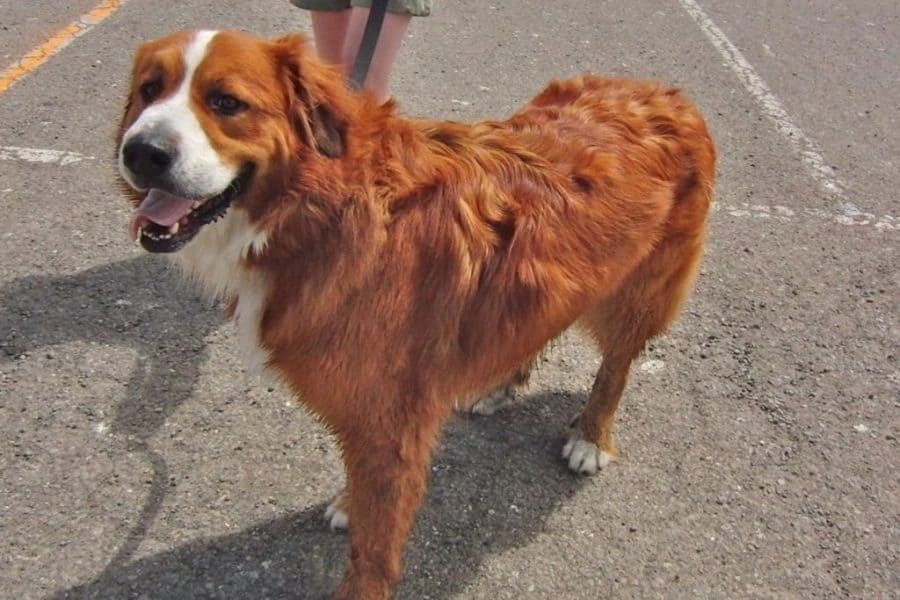
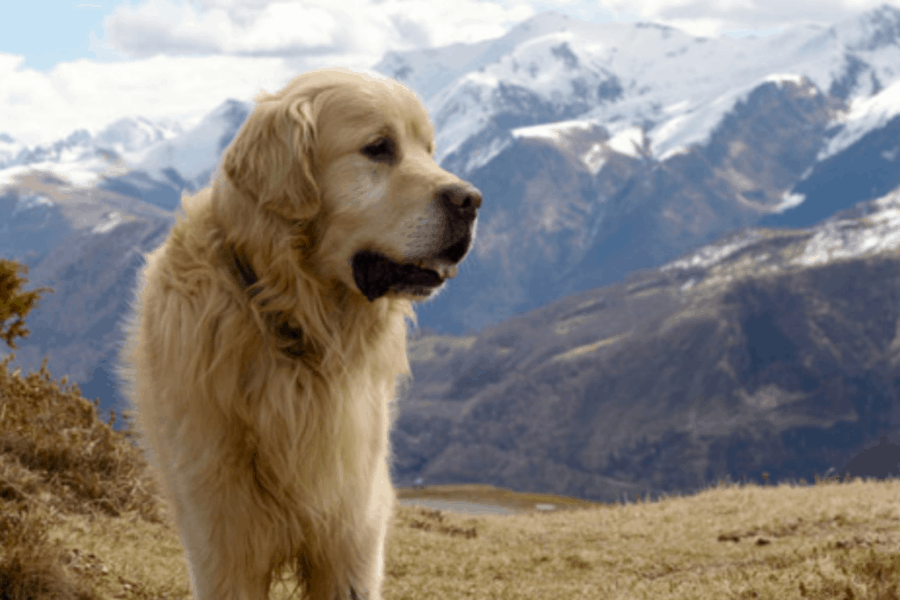

Colors of Great Pyrenees are limited and they are usually all white with a little dark color or patches over the ears. Other then all-white they are available in grey, badger, tan and red colors. Some also have different shades of grey.
Grooming the Great Pyrenees can be difficult if not managed well or if you as a dog parent are occupied with laziness. This is not a breed for lazy and relaxing people. The Pyrenees is work, a lot of work.
They have a double-coated coat that helps them as an insulator against any weather conditions. The Pyr are fluffy and fluff means more shedding and more dirt. They do need regular brushing and everyday grooming sessions.
On average, a Pyrenees will need 30 minutes of regular grooming. The 30 minutes every day will take care of the fluffy fur forever. Start with the brushing, use a rake or slicker brush.
These dogs have long and thick fur so before brushing their coat make sure they are no tangled hair.
- You can use a de-tangle spray before brushing their coat. Use a wide-tooth rake at a 45-degree angle combing from the neck to bottom to the tail.
- Then use a curved slicker brush. Use the slicker brush on every section by lifting it up.
- Use the wide-toothed rake or comb for the fur on the neck and shoulder too. The mane or ruff has the thickest fur and is also prone to tangled hair.
- The Pyrenees dog is double declawed so trim the hair around the claws or cut it with a scissor.
- These dogs will need either frequent showers or giant baths. In a way, over-bathing is helpful for them. Either you decide to give them frequent showers or one big bath, make sure you do not overuse the shampoo.
Longer durations of bath time should not result in large amounts of shampoo or soap on your pry’s fur.
- After the brushing and bathing always make sure to clean their ears immediately. The water can have lodged places and further it can create more dirt. Use ear wipes to clean their ears thoroughly or put cotton balls in their ears before bathing them.
- Other basic grooming needs like trimming nails should be done according to nail growth. Do not let their nails grow too big or cut them too short.
- The last and most important grooming care for pyr dogs is to not shave them completely. If you are firm on shaving them leave at least 2 inches hair from the roots.
Feeding

The best food for any dog is dog food because it is made considering their body requirements and it is dog food. However, dog foods also differ in nutrition and ingredients.
Depending on their nutritional requirement a Great Pyrenees puppy or a Pyrenees adult will need different dog foods and also different dog treats. If you choose to give them homemade food make sure it is freshly prepared every day.
Dogs need different food and different portion sizes of food as they grow up. Below is the age-wise segregation of food for a pyr dog.
Puppy (3 to 6 months)
A Great Pyrenees puppy of 3 to 6 months should be given 3 meals per day. The food quantity should be ½ to 1 cup for each meal.
If you’ve brought in a very small pyr puppy who is just 8 to 12 weeks old serve him/her 4 meals a day. A puppy that is so small will need mostly liquid food and for solids, you can soak the dry dog food with their liquid diet and then feed them. Know everything important about puppy feeding.
A Pyrenees puppy can also be given 8 meals per day. The portion size should differ and should not be more than 1 cup of food.
Regular puppy food should be switched to large breed puppy food by mixing the two foods half and a half for around 1 to 2 weeks.
Adult (8 to 12 months)
The large a puppy is the larger its food but this applies only till these dogs are just puppies once a puppy is more 6 to 8 months old, he/she is now an adult dog.
Adults do require more food but fewer meal times. Once a puppy is 6 to 8 months feed them 2 meals every day that consists of 3 to 4 cups of food. Once your Pyrenees is 1-year-old one feeding of 1 to 2 cups is all the food its body needs.
However, they might need 2 feedings and it is okay to feed them as much as they are hungry and not as much as they want.
Senior (3 to 7 years)
Like all dogs, a puppy’s diet at an early age can create a good and strong digestive system for its adult and senior age. Once a dog is used to a particular feeding schedule and diet they can be fed in the same way in their senior years.
A senior Great Pyrenees will need a maximum of 1 full bowl of food per day. If your pyre has always been a very active dog and is still so, you can serve them 3 to 4 cups of food.
Health and Vaccination

The Great Pyrenees is most likely to develop the below-mentioned health problems.
Bloat
Your Pyrenees is very much prone to develop the gastrointestinal disease called Bloat. This health condition mostly affects dogs that are narrow and deep-chested which puts the Pyrenees dog at a higher risk of developing bloat.
Bloat makes a dog’s stomach all twisting and filled with gas which can affect their blood supply. Symptoms can be digestive issues or an enlarged abdomen. Sometimes it can make your dog sit in a weird position like the front feet down and the rear end up. This condition can be fatal and requires preventive surgery.
Hip Dysplasia
The pyre breed can also develop hip dysplasia, it can be inherited from either of the dog’s parents. The problem once developed can worsen especially as your dog starts aging.
The symptoms include lameness or very weak legs, difficulty in getting up after lying down. It can also further lead to arthritis. X-ray scans can easily detect hip dysplasia and it requires surgery to be treated.
These dogs are also prone to elbow dysplasia.
Obesity
Large breeds are already heavy and sometimes managing their weight can go wrong or unobserved. The Great Pyrenees is no different than other large breeds when it comes to obesity and can easily become obese.
Keeping a track of their food intake and not feeding them extra out of love is strictly advised. Obesity and eating disorders can also cause Bloat in your pyr pup.
Bone Cancer
Bone cancer or Osteosarcoma is very common in this mountain dog. It can weaken their bones and joints as well and other related health issues.
Very early symptoms can include numbness in legs or weak legs. Early detection can help prevent the further spread of cancer by chemotherapy.
In some cases, the dog can develop a bone tumor and this occurs mostly in middle-aged large breed dogs like your Great Pyrenees.
Parasites
The Pyrenees has great and thick fur that can be a house for all kinds of bugs and worms. Your pyr buddy is a very good host for ticks and flies. They can also develop ear mites that infest their skin or ears.
They are also highly prone to get Heartworms by a mosquito bite.
These small monsters can make your large canine very uncomfortable and it can cause a lot of pain. Keeping a Pyrenees dog clean and free of worms or ticks is extremely important. This why as responsible dog parents you should always spare 30 minutes to thoroughly clean and groom your Pyrenees.
All the core 5-in-1 vaccines namely the DHPP (Canine Distemper, Hepatitis 1 and 2, Parainfluenza and the Parvovirus) should be given to the Great Pyrenees when he/she is 2,3 and 4 months old.
Vaccination can be confusing. Read our Guide To Dog Vaccination to have a better idea of it.
Frequently Asked Questions
The Great Pyrenees comes from the Pyrenees mountains located somewhere in Southwestern Europe between France and Spain. Also, there they are called the Pyrenean Mountain Dog. Only in the United States of America are they called as the Great Pyrenees.
The Great Pyrenees dogs have a huge history of guarding the livestock or flocks. They are naturally very protective and also a little possessive of their people. These dogs surely make as great family dogs as they are very self-sustained and well-behaved dogs. Being good family dogs comes naturally to them.
The Great Pyrenees is a large breed that is also very ancient and has had a guarding and working purpose in life. These dogs grow up to be giants and they cannot live well in apartments.
The Great Pyrenees dog is a working dog and always likes to be busy. They are not the most obedient dogs and do whatever they want to do. Leaving them alone for a reasonable period should be fine but do not leave them alone for hours at a stretch. They become very destructive if left alone.
A fur like that of a Great Pyrenees is sure to shed a lot. This makes them not at all hypoallergenic because once you start living with them your house will be full of dog hair.
Dogs who have double dewclaws can easily climb and dig out the ground good. The Great Pyrenees being a working dog can do a lot of climbing, turning, jumping with the double dewclaws and this is probably why they have it and that makes them great working dogs.
Similar Breeds
- Newfoundland
- Samoyed
- Great Dane
Hello Readers,
That’s all about this magnificent large breed, the Great Pyrenees. Hope you liked this article and it helped you know this breed a little better.
Feel free to ask us your doubts and also let us know your reviews on this article.
Share this with your friends on WhatsApp or Facebook.
Subscribe to our YouTube channel for visual and quick information about dogs.
Happy Petting to You Guys!



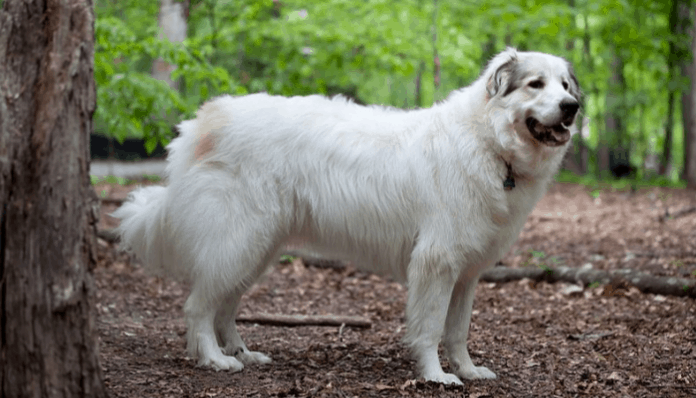








![10+ Best Dog Food Toppers That Your Dog Will Love [Including Picky Eaters] best dog food toppers with a small puppy](https://dogisworld.com/wp-content/uploads/2023/12/Topper-Product-Cover-100x70.jpg)